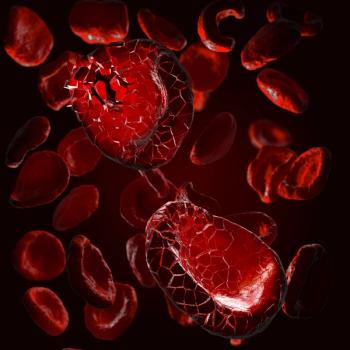
Oncology NEWS International
- Oncology NEWS International Vol 8 No 8
- Volume 8
- Issue 8
Stereotactic Core Biopsy Establishes Many Prognostic Factors
NEW ORLEANS-For the majority of mammographically detected invasive carcinomas with a mean size of 11 mm, stereotactic biopsy obtained with larger gauge needles provides adequate material for establishing a host of prognostic factors, said Michael D. Lagios, MD, medical director of the Breast Cancer Consultation Service, St. Mary’s Medical Center, San Francisco.
NEW ORLEANSFor the majority of mammographically detected invasive carcinomas with a mean size of 11 mm, stereotactic biopsy obtained with larger gauge needles provides adequate material for establishing a host of prognostic factors, said Michael D. Lagios, MD, medical director of the Breast Cancer Consultation Service, St. Marys Medical Center, San Francisco.
Stereotactic core technology can significantly reduce the morbidity, anxiety, and costs of the evaluation, and can increase the target accuracy for a biopsy of an occult lesion, compared with conventional needle-directed open techniques, he said. However, some have persistently questioned the equivalence of the diagnostic information obtained by the newer method, Dr. Lagios said at the American Society of Breast Disease annual meeting, cosponsored by the Ochsner Medical Foundation.
There are a few requirements for obtaining adequate diagnostic information with this technique, he said. You need excellent histopathology, excellent correlation between mammography and pathology, and, he quipped, eyes attached to the brain. You should also insist on minimal handling and prompt fixation, and get six to eight levels of tissue, enough to reserve some for other studies.
With proper technique, most stereotactic core biopsies using 14- or 11-gauge needles can establish histologic subtyping, grading, mitotic indices, hormone receptor status, and occasionally lymphatic invasion. It is usually possible to evaluate for HER2/neu, Ki-67, and p53 as well as other biomarkers, and to determine ploidy and S-phase fractionation by image cytometry.
Other significant prognostic featuresperitumoral lymphatic invasion, extensive intraductal carcinoma, and multicentricity or multifocalityare more easily documented with open biopsy or subsequent lumpectomy specimens, he pointed out.
Estimating Tumor Size
Apart from nodal status, tumor size is the most important prognostic factor for distant recurrence and for local recurrence when T3 is reached. It would appear that stereotactic needle core technology would be inherently less accurate when compared to size determinations made by a pathologist measuring the excised lesion, but this is not necessarily so, Dr. Lagios maintained.
Tumor size, for all its importance and for what intuitively would appear to be a simple determination, is often erroneously recorded, he pointed out. Pathologists often record the biopsy size as the tumor size, overstate the tumor size by including the invasive as well as adjacent areas of in situ disease, use eyeball estimates, and make errors related to sectioning the tumor.
Dr. Lagios cautioned that stereotactic biopsies obtained with the Mammotome (a directional vacuum-assisted biopsy technique using a thin rotating blade) are not designed to permit reliable measurement of tumor size, although the size of the carcinoma within the core can be measured by ocular micrometry.
In some cases, this will actually represent tumor size for T1a and smaller T1b carcinomas, but, in all cases, correlation with mammographic and/or son-ographic studies is required, he said.
Such estimates of tumor size based on correlation of imaging studies with histology can markedly improve the accuracy of the tumor size estimate, whether from a core biopsy or open excision. He pointed out that size determination made by a pathologist should also be correlated with preoperative studies, to avoid under- or overestimating tumor size.
Measurement of tumor size in an open biopsy is certainly easier, but in practice it is no more accurate than tumor size estimated from correlated imaging studies and core pathology, he said.
Dr. Lagios said that radial scars are an issue of concern with this technique. They can be associated with synchronous atypical ductal hyperplasia, ductal carcinoma in situ (DCIS), and lobular carcinoma in situ, and can be misdiagnosed as invasive cancer (but can be distinguished by immunohistochemical staining).
Stereotactic biopsy can clearly establish a diagnosis of a radial scar, but it remains to be determined to what extent the technique will sample associated atypical hyperplasia when present, he said.
Articles in this issue
over 16 years ago
False positives frequent in CT lung cancer screening trialover 26 years ago
Breast Cancer Prevention With Tamoxifen Appears Cost-Effectiveover 26 years ago
NCI Discovers Gene Variations From Existing Databasesover 26 years ago
CPDR Unveils First Center Solely for Prostate Cancer Researchover 26 years ago
Going Beyond CHOP in Advanced Large-Cell Lymphomaover 26 years ago
Memorial Sloan-Kettering Opens Rockefeller Outpatient Pavilionover 26 years ago
Ernst Wynder, Pioneer in Preventive Medicineover 26 years ago
AHCPR Plans Health Care Market, Managed Care Research Centersover 26 years ago
NSAIDs May Protect Against Common GI Cancersover 26 years ago
Four Researchers Receive General Motors AwardsNewsletter
Stay up to date on recent advances in the multidisciplinary approach to cancer.


















































































